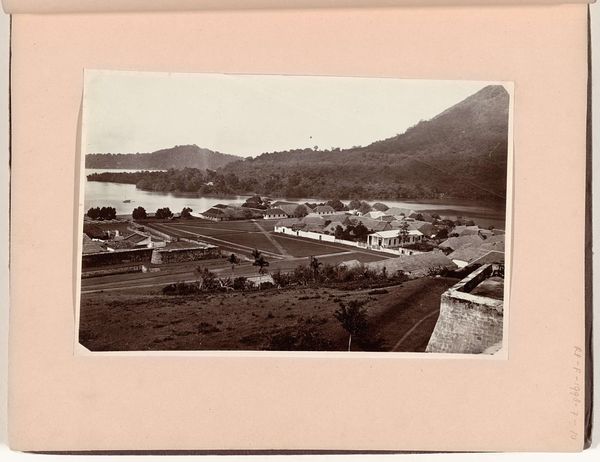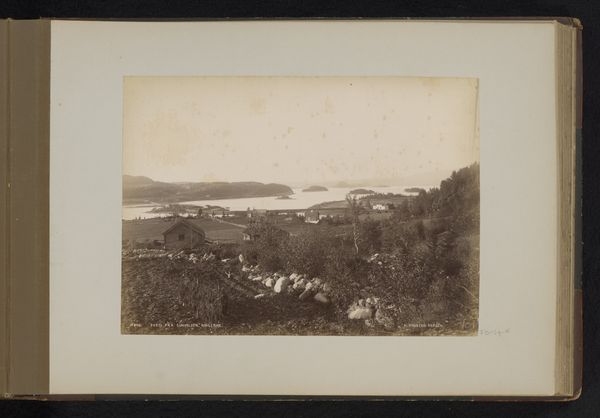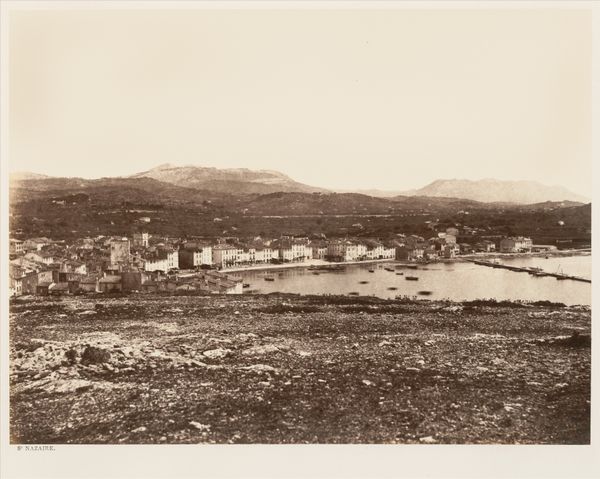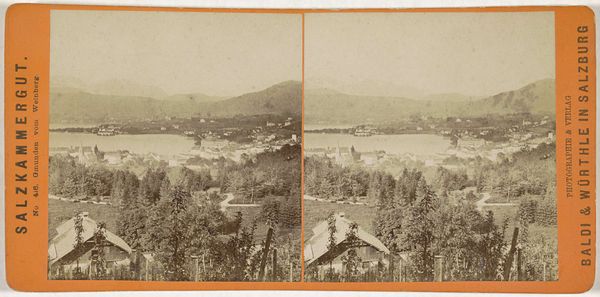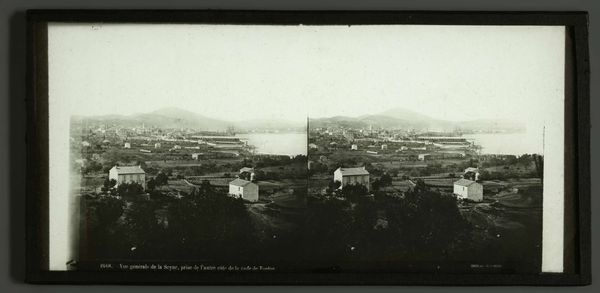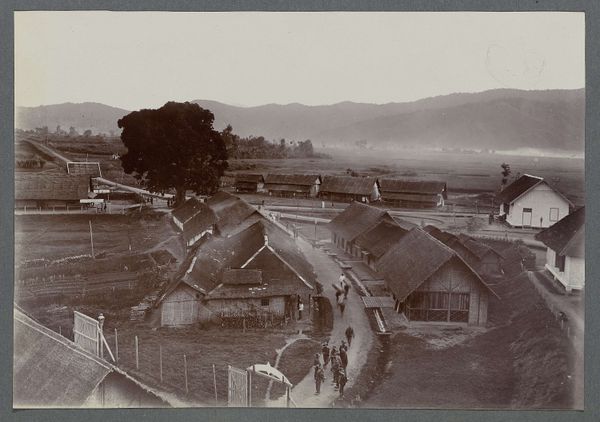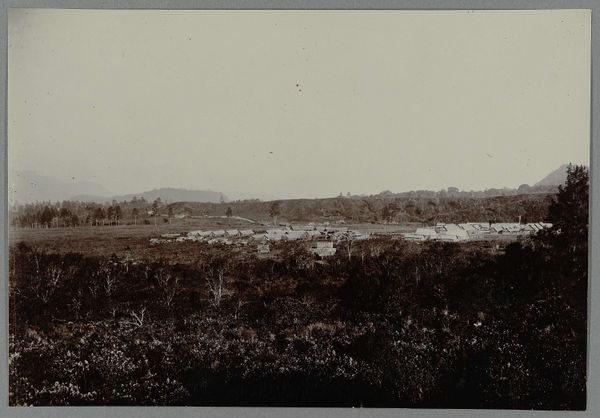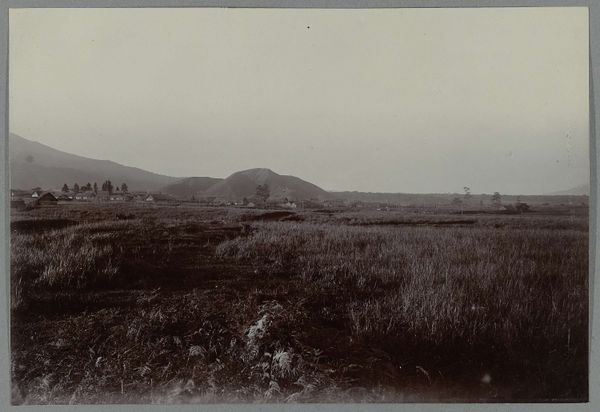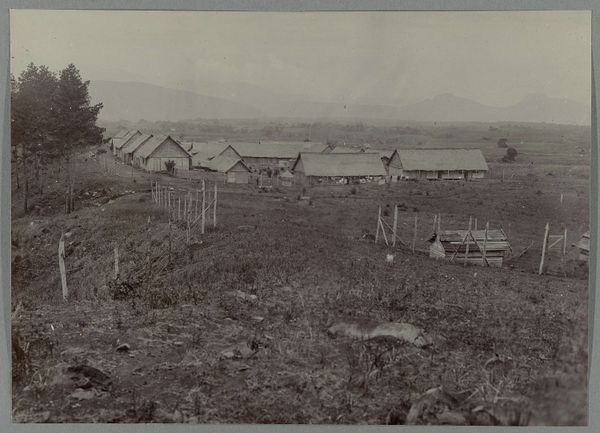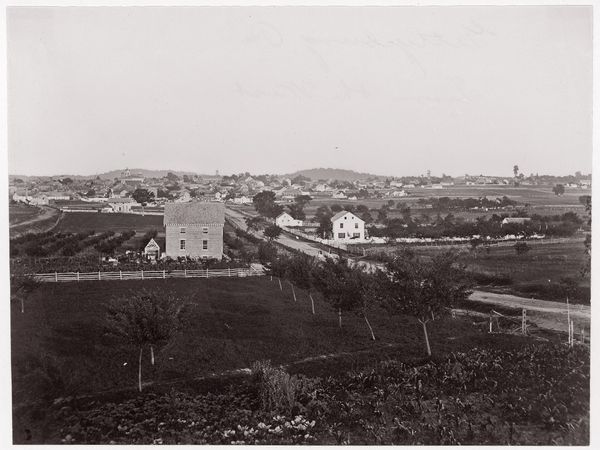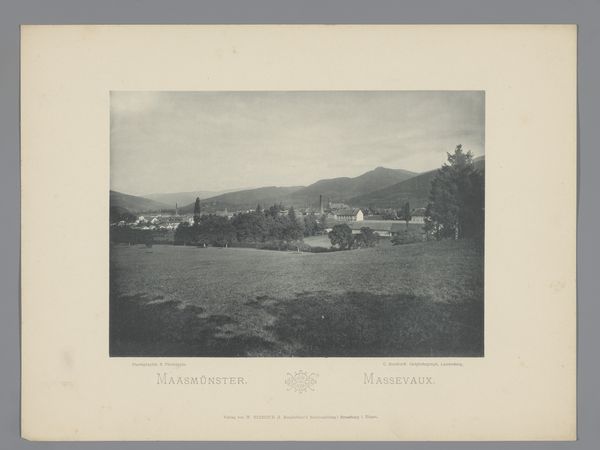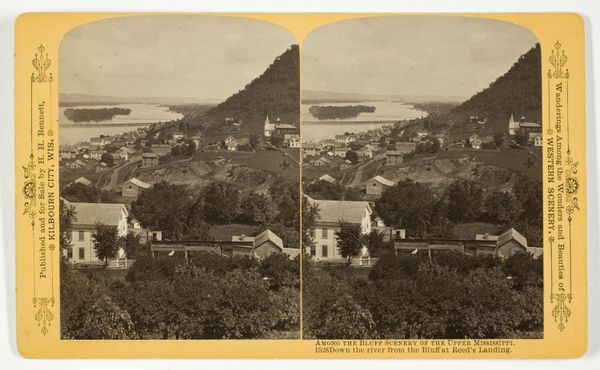
print, photography, gelatin-silver-print
#
ink paper printed
# print
#
landscape
#
photography
#
orientalism
#
gelatin-silver-print
Dimensions: height 85 mm, width 172 mm
Copyright: Rijks Museum: Open Domain
Curator: Before us, we have "Landgoed rondom Fort de Kock in Bukittinggi, Sumatra," a gelatin silver print crafted by Woodbury & Page sometime between 1857 and 1864. It offers a window onto a long-lost world, a slice of colonial Indonesia preserved in monochrome. Editor: My immediate impression is one of stillness. Despite the abundance of foliage, there's a remarkable serenity, a sense of ordered space imposed upon the wild. The geometric structure created through light and shade creates this formal, stable outlook. Curator: Indeed. Consider the context: Woodbury & Page were commercial photographers catering to a European audience fascinated by the "exotic" East. Images like this reinforced colonial power structures, presenting a tamed and knowable landscape. Editor: You mention control. I see that manifested through the visual arrangement. The cultivated lawns contrast sharply with the untamed vegetation in the foreground. There’s a very deliberate tension between constructed, artificial forms and wilder, organic lines. Semiotically, the cultivated represents colonial power, while the organic points to a colonized natural sphere. Curator: Precisely! Furthermore, these photographers skillfully marketed their images back in Europe as curiosities of far-off lands. It speaks volumes about the gaze that Westerners had regarding different cultures. Photography, from its earliest days, was a tool for constructing and disseminating ideology. Editor: From a purely formal point of view, I'm captivated by the tonality. The light graduates from crisp highlights on the rooftops to the more nuanced grays in the mountains. It directs the eye through space in an unusual, asymmetrical but stable layout. Curator: That careful composition you see likely reinforced certain racial and social hierarchies. It emphasizes distance, control and separation. Even the choice of perspective— elevated, surveying — reflects a dominant Western gaze. Editor: A gaze filled with the inherent contradictions of the colonial project: fascination and domination. Seeing this photo in today’s Rijksmuseum challenges us to critically consider its meanings in the present, more than a century after its creation. Curator: Absolutely. Thinking about it, the choices the artists made in capturing it, force me to acknowledge the complex web of socio-political influence embedded within its delicate texture. Editor: Indeed. A powerful reminder that what we often deem mere image and composition in this type of artworks contains rich historic value as well.
Comments
No comments
Be the first to comment and join the conversation on the ultimate creative platform.
